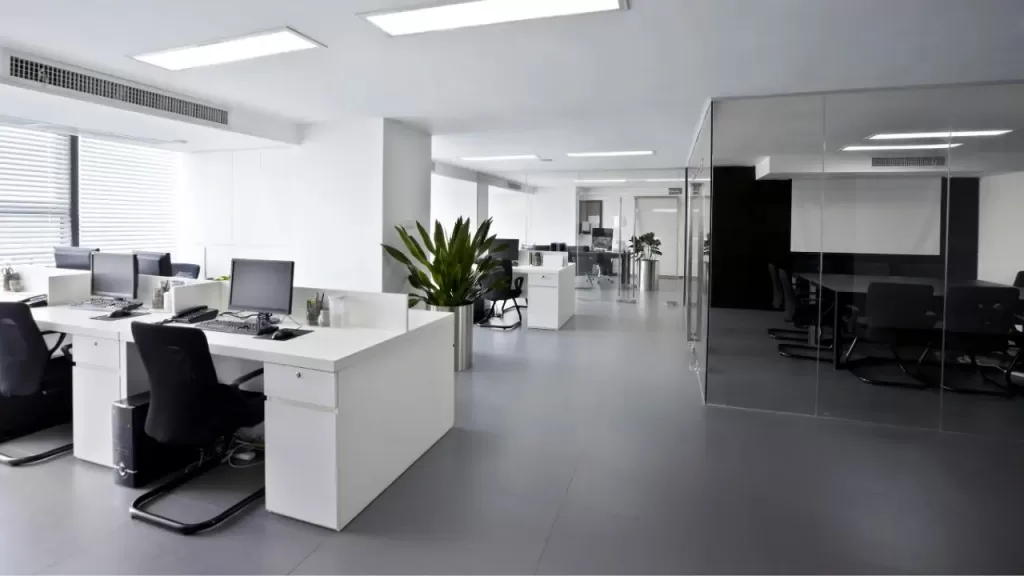What can hinder the range of the WiFi network in a company?

Electromagnetic interference or construction materials could significantly hinder the range of the WiFi network in a company
The Internet has become absolutely indispensable for the daily operations of countless companies. Connection failures or outages can lead to decreased productivity or even temporary pauses in activity. For this reason, it is essential to be aware of all the factors that can hinder the reach of a company’s WiFi network and to know how to respond to them.
There are hardly any areas immune to this problem. Regardless of the type of installation, obstacles will almost always negatively impact the quality, strength or range of the signal. For example, furniture, elevators or cubicle partitions have a major influence on office buildings. If we travel to warehouses, they often consist of hundreds of shelves full of products that block the signal.
Something similar happens in industrial buildings, where it is customary to place the access points on extremely high ceilings. Factories are no exception: their large dimensions and the high volume of machinery and metallic elements they contain constantly produce bounces and interferences.
It should also be borne in mind that there are a multitude of factors that contribute to hindering the range of the WiFi network in a company. One of the most common is undoubtedly the frequency band used.
A dive into the frequency bands
WiFi technology operates in three different frequency bands: 2.4 GHz, 5 GHz and 6 GHz. And the choice we make can help or hinder the range of the WiFi network in a company.
The first of these is a small band with only 13 channels (a figure that, in the case of Japan, rises to 14). And it is the one that tends to cause the most problems. The reason? This band is shared by other technologies, such as Bluetooth or Zigbee, and electromagnetic interference from common devices such as microwave ovens or baby monitors affects this band.
But does the interference get better when switching bands? In the 5 GHz band, there is a band that interferes with maritime and airborne radars. In fact, it is prohibited in some countries, and if channels in these ranges are used, it is essential to consult the legislation beforehand. This step not only saves us interference problems but also legal problems.
To circumvent interference with this kind of signal, WiFi devices have implemented the Dynamic Frequency Selection mechanism. This mechanism forces equipment to change channels as soon as it detects a radar signal, which could, of course, lead to temporary interruptions in the connection.
Finally, there is the 6 GHz band. In many regions, this band has been released for unlicensed use. However, in others, it may still coexist with licensed services, such as point-to-point communication links, which could lead to interference.
In this case, a site survey with a spectrum analyzer is necessary to obtain a reliable heat map to help users detect interference and verify that there are no other emissions that could cause problems.
Obstacles that can hinder the range of a company’s WiFi network

WiFi travels via waves, which have a certain coverage. If the signal is forced to pass through various obstacles along the way, it will not reach as far. In addition, along the way, it will lose strength, reaching the end devices with less strength, which could substantially affect workers who need to connect to the Internet to carry out their activities.
The design of the installation and the construction materials used play a critical role in hindering the range of the WiFi network in a company. But which are the most harmful?
- Glass partitions: these are very common in modern offices to create bright spaces. However, they can significantly attenuate the signal, especially if treated or tinted.
- Gypsum panels: one of the most common internal partitions in companies, commonly known as plasterboard walls. Depending on their thickness and whether or not they contain insulation, they can partially block the waves.
- Cement, concrete or brick walls: these are undoubtedly three of the most commonly used materials. Again, their thickness has a direct influence on WiFi quality.
- Metal structures, such as steel beams and columns, which can cause reflections and signal attenuation.
- Heavy and metallic machinery: like the above, they have a high capacity to reflect and block signals.
- Shelving: what office or warehouse does not house shelves full of books or other objects? Depending on their height and size, they could significantly affect the connection.
- Doors: another of the most influential elements, especially when it comes to metal doors in the loading areas of the warehouses, fire doors, security doors or emergency exit doors.
- Elevators: if the companies are composed of several floors, they will have an elevator. These are a real barrier to connection, especially if they are covered with metal plates.
Knowing in advance the most common obstacles is essential for designing offices or warehouses that are friendly to the Internet signal. That is, with a space layout that cannot hinder the reach of the WiFi network in a company and, therefore, does not generate connection problems.
Other points to take into account in order not to hinder the range of the WiFi network in a company
If you want to optimize the installation as much as possible to avoid Internet outages and not affect the business continuity of organizations, it is important to keep other aspects in mind.
Although updating firmware or software is not closely related to the reach of a company’s WiFi network, it never hurts to make sure that all equipment is up to date. This effort doubles security and allows you to enjoy the performance and speed improvements that the latest versions can introduce.
On the other hand, it is advisable to purchase professional-grade access points. While it is true that their price is somewhat higher, cheap can be expensive. Home devices work well, but professional devices have been specifically designed to be more robust and meet all the needs of business environments, with improvements in coverage, optimized bandwidth management and management of large numbers of users.
Finally, it is important to verify that roaming is working properly. This technology allows the WiFi connection to hop between different access points as users move around the premises, providing them with the best possible signal quality and avoiding communication outages.
Considering all these aspects is crucial to maximizing the reach of the WiFi network in a company and promoting worker productivity.